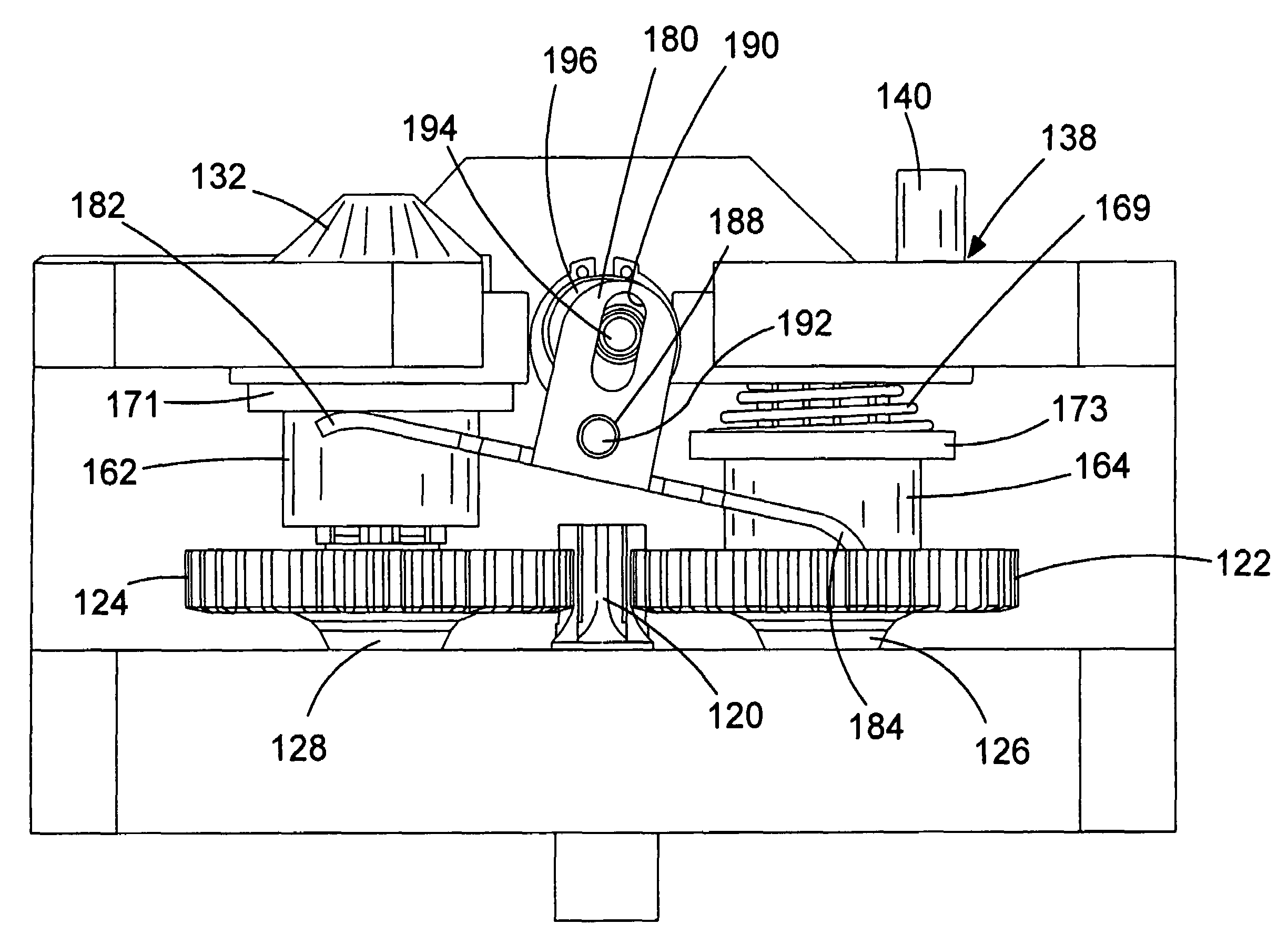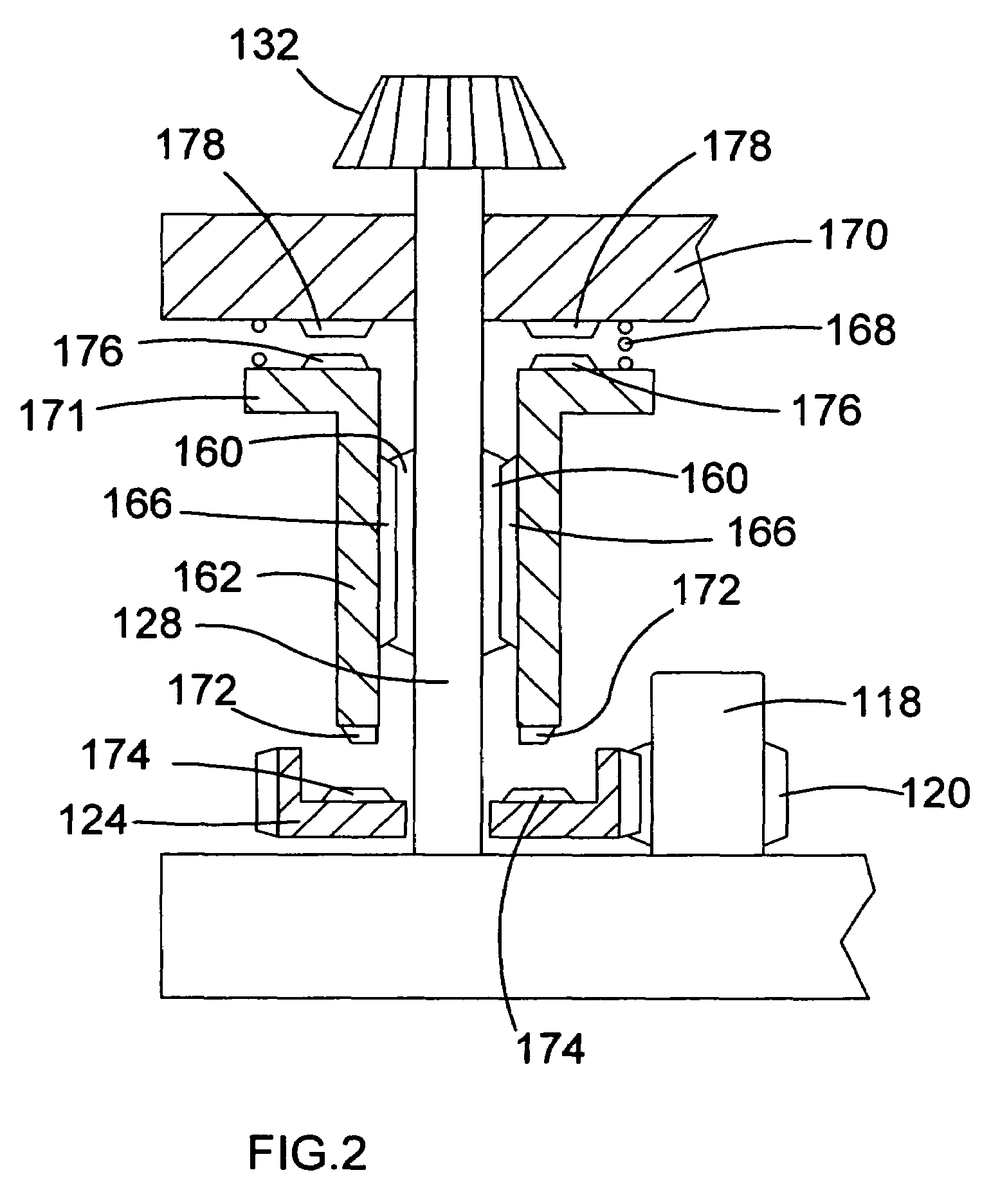Mode change switch for power tool
a technology of power tools and switch bodies, applied in the field of power tools, can solve the problems of high manufacturing and assembly costs, and achieve the effects of simplifying the switching mechanism, simplifying the construction of the seesaw lever, and simplifying the linkag
- Summary
- Abstract
- Description
- Claims
- Application Information
AI Technical Summary
Benefits of technology
Problems solved by technology
Method used
Image
Examples
Embodiment Construction
[0031]Referring to FIG. 1, a hammer drill shown generally by 102 comprises a housing 104 formed from at least two clamshell halves of durable plastics material, as will be understood by persons skilled in the art. Extending from a forward end of housing 104 is a chuck 106 or similar device for gripping a drill bit (not shown). A rechargeable battery pack 108 is detachably fixed to the bottom of the housing, and can be detached from the housing 104 by depressing clips 110 to release the battery pack for the purpose of recharging or exchange. The housing 104 comprises a handle portion 112 having a trigger switch 114. An electric motor 116 is disposed in the housing. The motor is electrically coupled to the battery pack via the trigger switch. The trigger switch is for selectively energising the motor to operate the hammer drill. An output shaft 118 extends from the motor 116. The output shaft 118 has a pinion 120 formed thereon. The pinion 120 meshes with a first gear 122 and a second...
PUM
| Property | Measurement | Unit |
|---|---|---|
| reciprocating striking force | aaaaa | aaaaa |
| rotational force | aaaaa | aaaaa |
| rotation | aaaaa | aaaaa |
Abstract
Description
Claims
Application Information
 Login to View More
Login to View More - R&D
- Intellectual Property
- Life Sciences
- Materials
- Tech Scout
- Unparalleled Data Quality
- Higher Quality Content
- 60% Fewer Hallucinations
Browse by: Latest US Patents, China's latest patents, Technical Efficacy Thesaurus, Application Domain, Technology Topic, Popular Technical Reports.
© 2025 PatSnap. All rights reserved.Legal|Privacy policy|Modern Slavery Act Transparency Statement|Sitemap|About US| Contact US: help@patsnap.com



